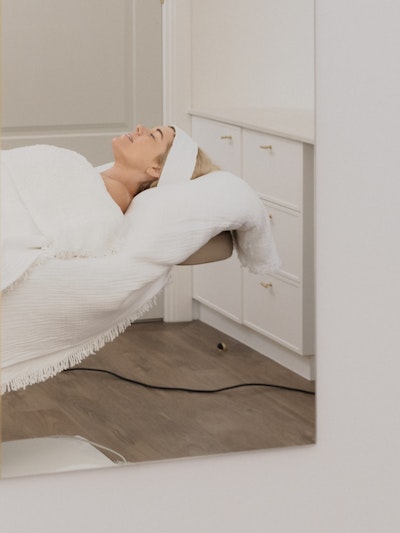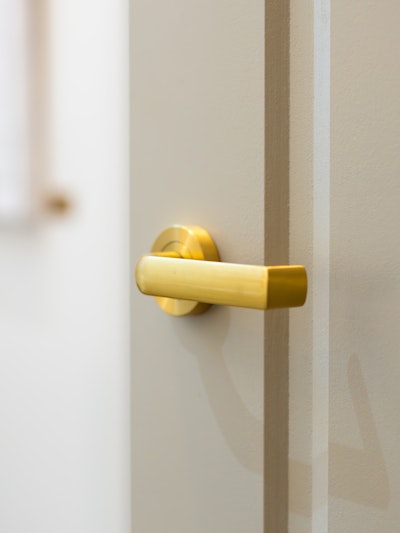
Gel treatments are used to add volume to areas of the face; including addressing volume loss in the face which may be experienced with ageing.
Gel treatments are designed to soften creases and folds in the face, reduce the appearance of wrinkles, and increase or create volume to areas of the face, including lips, cheeks and under the eyes.
Gel treatments can only be considered within the context of a consultation to determine suitability given your unique circumstances. To book your non-surgical consultation email us at [email protected] or call our Care Team on (02) 4002 4150.
All medical procedures carry risks. With gel treatments, possible risks include:
Common injection related reactions include bruising, itching, pain, transient bleeding, redness and/ or swelling in the treatment area. These reactions are usually resolved within a few days to one week.
In some cases more serious adverse events have been reported. These reported reactions include papules/nodules/lumps, swelling, granuloma (inflammation of tissue forming a lump), symptoms of visual disturbance, infection/abscess, mass/induration, numbness and facial nerve paralysis, redness, inflammation, bruising/haematoma, skin discolouration, scarring, skin atrophy (reduction in skin tissue) or skin hypertrophy (increase in skin tissue), allergic reaction, rash, muscle disorders and ischaemia/necrosis.
In some cases, nodules (small bumps under the skin) may occur within a few weeks of treatment, or they could be delayed and occur several months to over a year after treatment. Such nodules are occasionally associated with inflammation or discolouration of skin. In some cases, the nodules have been reported to have resolved on their own following treatment but may persist for a prolonged time or may need surgical excision.
Injection procedures may also lead to keloid scars and reactivation of latent herpes viral infections
Isolated rare cases of vision abnormalities including blindness and stroke have been reported.
What to expect after your treatment:
Swelling: Swelling is a common side effect of filler injections and usually occurs immediately or within the first few hours after the procedure. It can last for a few days to a week, depending on the individual and the specific filler used.
Bruising: Bruising at the injection site is also common and may appear as small, localised areas of discolouration. The bruising can vary in severity and typically resolves within a week or two.
Redness: Some redness or mild inflammation may occur at the injection site, which is usually temporary and subsides within a few hours to a couple of days.
Tenderness or sensitivity: The treated area may feel tender or sensitive to touch for a few days after the injection. This tenderness is usually mild and should improve over time.
Itching: Itching or a mild sensation of tightness may be experienced in the treated area. This is generally temporary and should resolve on its own.
Lumpiness or unevenness: Initially, the filler may create a sensation of lumpiness or unevenness in the treated area. This is usually temporary and should smooth out as the filler settles.
Discolouration: In rare cases, the injected area may appear slightly bluish or discoloured. This is usually due to superficial bruising and should resolve as the bruise heals.
Rare complications: Although uncommon, there is a risk of more serious complications such as infection, allergic reactions, or vascular occlusion (blockage of a blood vessel). If you experience severe pain, excessive swelling, or any concerning symptoms or are otherwise concerned, it is important to seek medical attention promptly.
Post-treatment instructions:
- Avoid touching or applying significant pressure to the treated area for 2 weeks after the procedure. This includes avoiding excessive rubbing, massaging, or pressing on the area.
- Minimise strenuous exercise or activities that increase blood flow to the face for the first 24 to 48 hours after the procedure. This can help reduce swelling and bruising.
- Apply cold compresses or ice packs to the treated area for the first 24 hours as needed. This can help reduce swelling, bruising, and discomfort. Remember to wrap the ice pack in a clean cloth to protect your skin.
- Avoid exposure to excessive heat, such as saunas, hot tubs, or steam rooms, for at least 48 hours after the procedure. Heat can increase swelling and potentially affect the results.
- Avoid consuming alcoholic beverages for at least 24 hours after the procedure, as alcohol can increase the risk of bruising and swelling.
- Keep your head elevated while sleeping to reduce swelling. Try using an extra pillow or sleeping in a slightly upright position.
- Follow any specific instructions provided by your injector regarding follow-up appointments or additional treatments.
- Attend follow-up appointments: It's important to attend any scheduled follow-up appointments with your treating practitioner so they can assess your progress, address any concerns or questions you may have, and make any necessary adjustments to your treatment plan.
Gel treatments are suitable for both men and women who want to address changes in their skin due to ageing, recreate lost volume to areas of their face, add volume to areas of their face to address asymmetry or overall facial symmetry and balance of features.
Gel treatments should not be used if you have active skin cancers within the treatment areas; open wounds or sores; irritated skin within the treatment zone; an allergy to stainless steel or anaesthetics; a haemorrhagic (bleeding) disorder or haemostatic (bleeding) dysfunction; or are pregnant or breastfeeding.
Avoid alcohol in the week prior to your treatment because it can increase the risk of bruising and swelling. Also avoid aspirin and anti-inflammatory medications 2 weeks prior.
Numbing cream and local anaesthetic can be applied to the treatment area to improve comfort levels during the treatment. Treatment times vary from 15 minutes to 45 minutes, depending on the area being treated. Some mild pain and discomfort are to be expected, although this varies depending on individual factors, such as pain tolerance level.
A consultation with a medical professional is required to determine if this treatment is appropriate for you. Under the 2024 TGA rules for cosmetic prescription medicine, we are unable to advertise the costs of our services that may include these medicines. Pricing information can be shared after a consultation has taken place and is dependent on your specific treatment plan. Email us at [email protected] or call our Care Team on (02) 4002 4150.
Gel treatments can be paired with other treatments to address concerns with ageing and volume loss in the face. A consultation is the best way to discuss the treatment options suited to your concerns and goals. To book your non-surgical consultation email us at [email protected] or call our care team on (02) 4002 4150.
See below for some of the available pairing treatment options.

Collagen Stimulation

Dynamic Facial Lines

Bio-Remodelling

BBL® HEROic

HALO™

Forever Young BBL™ HEROic

SkinTyte II by BBL™ HEROic
FAQs
- Cheeks.
- Under the eyes.
- Tear troughs (dark circles under the eyes).
- Lips.
- The downturned corners of the lips (marionette fold).
- Around the lips.
- Nose.
- Temple hollows.
- Chin.
- Jawline.
The results of gel treatments can be seen immediately after your treatment. However, there will likely be some swelling and bruising also, which will take a few days to resolve for you to see the final result.
Yes, gel treatments do not affect the movement of your facial muscles so you will have the same movement and ability to do different facial expressions as you did prior to the treatment.
No, results can last between 6-24 months depending on a variety of individual and treatment factors. While the results are not permanent, gel treatments will support the skin and underlying structures that are impacted by the ageing process. Gel treatments can also be reversed.
We understand that you’re busy and your availability can change. We ask that for all non-surgical appointments you provide 72 hours’ notice so that we can reallocate your time. Less than 72 hours’ notice for a missed appointment, reschedule, or cancellation of your appointment will result in forfeiture of your $100 prepayment. Please see our Terms & Conditions.
To be compliant with TGA guidelines and AHPRA regulations, we are unable to name treatment details. Please send us an email at [email protected], or call our care team for more information on (02) 4002 4150. All surgical procedures are performed by Specialist Plastic Surgeon, Dr Gary Avery (FRACS). Dr Gary Avery (MED0001633092) is a registered medical practitioner, with specialist registration in Surgery – Plastic Surgery. Individual results and recovery times may vary. All procedures carry inherent risk.